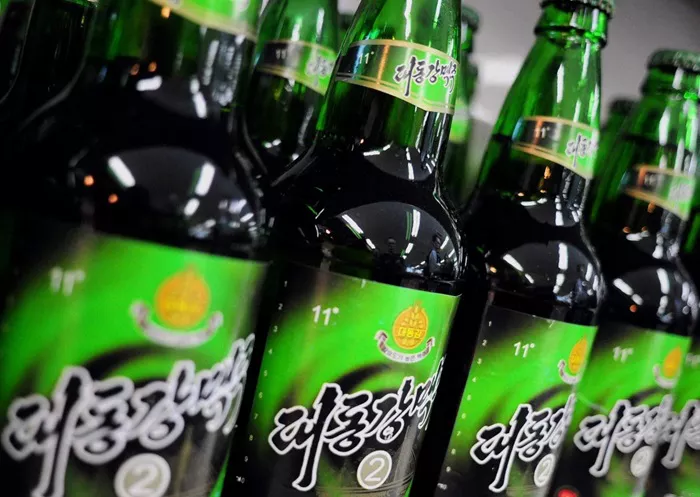Before the rise of the modern IPA, America’s contributions to the global beer canon were modest. Yet one notable exception—a rustic, improvisational lager born of necessity—left a lasting mark on brewing history. Known as steam beer, this uniquely American creation emerged along the ice-free reaches of the West Coast during the frontier era and ultimately came to be defined by one brewery: San Francisco’s Anchor Brewing.
Though other homegrown beer styles like cream ale, brilliant ale, Pennsylvania swankey, and Kentucky common briefly flourished, most failed to survive Prohibition. Steam beer, however, endured—thanks to the perseverance of Anchor Brewing, which kept the style alive long after others had vanished.
Steam beer faced existential threats throughout its history. The advent of refrigeration in the late 19th century allowed traditional lagers to be produced more easily, diminishing steam beer’s appeal. By the 1910s, it was already on the brink of extinction. Prohibition delivered another blow, shuttering many of the breweries that made it. By 1950, Anchor Brewing stood alone.
The brewery itself narrowly avoided closure. Its salvation came in 1965, when Fritz Maytag, heir to the Maytag appliance fortune, purchased the struggling operation days before it was set to shut down. Under his stewardship, Anchor became not only the guardian of steam beer but a beacon for a new generation of craft brewers.
A defining moment in steam beer’s history came in 1981, when the U.S. government granted Anchor Brewing a trademark on the term “steam beer.” While others could still brew in the style, they were prohibited from using the name. The industry settled on “California common” as an alternative, but the term lacked resonance. In practice, steam beer had become synonymous with Anchor.
Even after Anchor Brewing closed its doors in 2023, the beer—and its legacy—refused to fade. In a poetic twist, Chobani founder Hamdi Ulukaya stepped in to rescue the historic brewery, echoing Maytag’s intervention decades earlier.
A Frontier Innovation
Though often associated with San Francisco, steam beer was brewed across the American West—in Oregon, Washington, Nevada, and Alaska. Its origins trace back to the 1850s, when German immigrants introduced lager brewing to the United States. Lacking refrigeration, brewers improvised, fermenting lager yeast at warmer temperatures and producing a fast, inexpensive beer that came to be known simply as “lager.”
The term “steam beer” entered the lexicon in the 1860s, becoming the dominant label by the 1880s. Theories about its name abound. Anchor Brewing favored an explanation involving steam venting from brewery rooftops into San Francisco’s foggy air. However, historical records suggest the term more likely referred to the beer’s unusually high carbonation. Some sources reported pressures reaching 70 psi in barrels—comparable to Champagne. Breweries added kräusen to spark secondary fermentation, producing the beer’s signature effervescence.
According to 19th-century brewing manuals, steam beer defied categorization. It used lager yeast but was not cold-conditioned. Its production methods varied widely, borrowing from both German and British traditions. The result was a diverse category rather than a uniform style, unified more by economics than technique: it was cheap to make and to drink.
Defining a Style
The revival of Anchor Brewing under Maytag cemented steam beer’s place in American brewing lore. Maytag expanded the brewery’s offerings, adding Liberty Ale, Porter, Old Foghorn Barleywine, and a much-loved Christmas Ale. But Anchor Steam remained the flagship—and, increasingly, the benchmark for California common.
Some brewers attempted their own interpretations. Atlas Brew Works in Washington, D.C., launched in 2013 with District Common, a lighter take on the style. Despite pride in the product, it struggled to find a broad audience. “It’s pretty popular among the staff, but I don’t think it’s a crowd favorite,” said Daniel Vilarrubi, the brewery’s director of brewing operations.
Others, like Toppling Goliath in Iowa, adapted their California commons over time. Dorothy’s New World Lager began as a tribute to Maytag but gradually transitioned into a more traditional lager as the brewery evolved.
Still, deviations from the Anchor model remained rare. As Firestone Walker’s Sam Tierney put it: “It’s a style that went through a very tight evolutionary bottleneck… basically nobody has been able to popularize any significant deviations from Anchor.”
Looking Forward
João Alameida, a former Anchor tour guide who eventually worked in production, now oversees brewing at Almanac in the Bay Area. He plans to revive a California common at his new brewery in 2025. While Almanac’s system differs from Anchor’s, Alameida aims to honor the core elements: caramel malt, two-row malt, kräusening, and Northern Brewer hops.
“Things that shine for me with steam beer [are] the mouthfeel, the caramel, the foam,” Alameida said. “That velvety foam, and the high carbonation… oh, and the kräusening practice.”
The version of steam beer that existed in the 19th century was very different from Anchor’s modern interpretation, but it is Anchor Steam that endures in public memory. Like Guinness for dry Irish stouts, it has become the singular reference point for its category.
As the industry awaits the next chapter in Anchor’s story, one thing is clear: steam beer, once a makeshift frontier drink, has become an icon. Whether through its resurrection by a new owner or through inspired imitations, the legacy of Anchor Steam continues to bubble beneath the surface of American brewing.
You Might Be Interested In:


